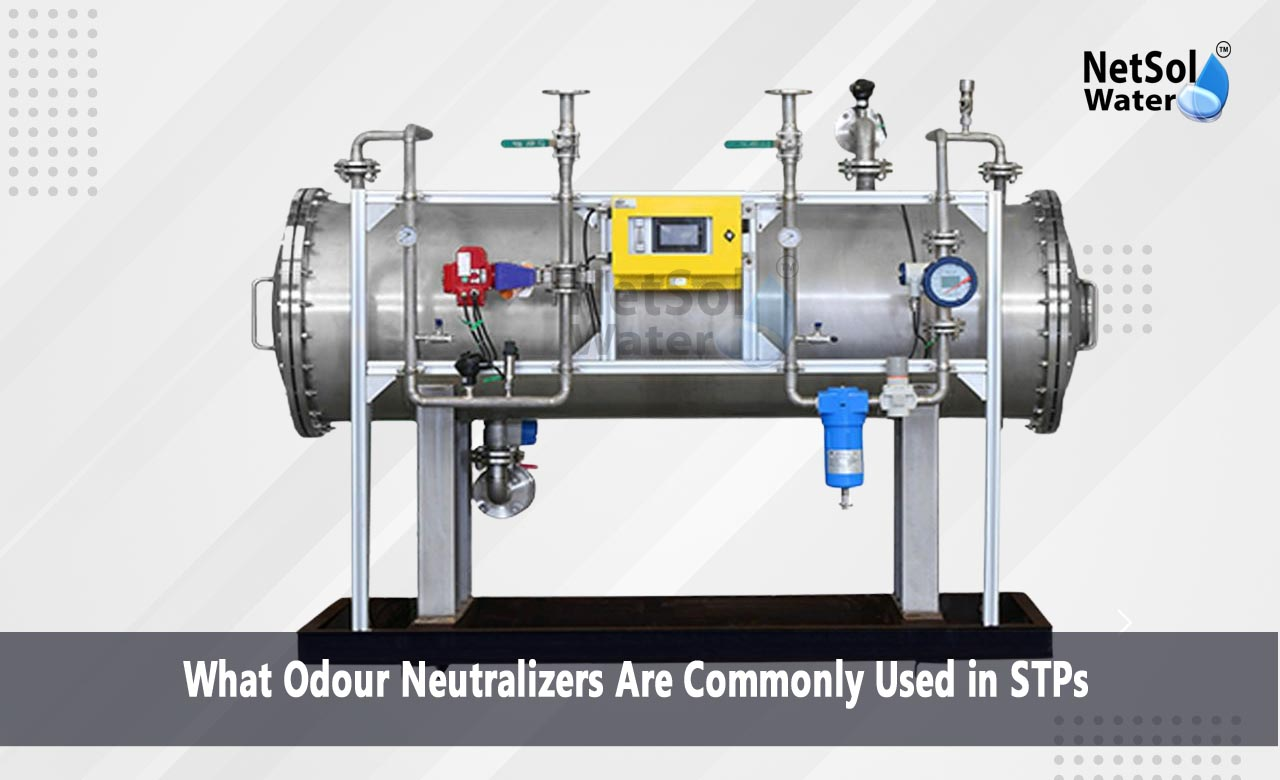What Odour Neutralizers Are Commonly Used in STPs?
Sewage treatment plants often emit strong odours that affect workers and nearby residents. Controlling these smells improves air quality and supports public health. Odour Neutralizers in STPs play a key role in this effort. Netsol Water leads the market in manufacturing these solutions. The company designs products that stop odours at the source. Their range meets diverse needs without harm to the environment or treatment processes.
An effective odour control plan begins with the right neutralizer. Plants face different challenges at each stage of treatment. Netsol Water offers expert guidance to choose the best option for raw sewage tanks or sludge handling units. The company backs its products with technical support and testing. This ensures consistent performance and helps plants meet strict regulations.
Chemical Neutralizers
Chemical treatments offer fast odour reduction. They react with odorous compounds to form harmless substances. These options prove effective in many parts of a plant.Let us have a look at some chemical neutralizers used in STPs.
Activated Carbon Treatment
Activated carbon traps odour molecules on its large surface area. Operators pass foul air through carbon beds. The material captures hydrogen sulphide and other gases. Over time the carbon reaches saturation. Teams then replace or regenerate the bed to restore performance.
Read: Sewage Treatment Plant Manufacturer
Ozone Application
Ozone breaks down odorous compounds by oxidation. Plants inject ozone gas into odour streams. This process converts offensive chemicals to water and oxygen. It does not leave harmful residues behind. However it needs proper control as ozone itself can irritate. Netsol Water offers ozone generators designed for safe delivery.
Hydrogen Peroxide Dosing
Hydrogen peroxide oxidizes sulphur compounds in liquid streams. Operators dose peroxide into sludge tanks or collection lines. The chemical reacts to neutralize foul smells on contact. It also prevents sulphide formation before it escapes. Netsol Water supplies stabilized peroxide that works at low doses and low cost.
Biological Neutralizers
Biological methods use living organisms or enzymes to remove odours. They often suit areas where chemical dosing proves costly or risky. These solutions can work alongside other neutralizers for better results.Let us have a look at some biological methods used in STPs.
Biofilter Systems
Biofilters rely on natural microbes fixed on a packing media. Air passes through the filter bed and microbes degrade odorous gases. Plant teams monitor moisture and nutrient levels to keep the culture active. Netsol Water offers biofilter media tailored to local climate and waste characteristics.
Enzyme Based Solutions
Enzymes act as catalysts to accelerate odour breakdown. Operators add enzyme blends to sludge or collection sumps. The enzymes target specific compounds such as ammonia or sulphides. This method reduces odour without altering pH or harming microbes native to the plant.
Microbial Cultures
Specialized bacterial strains digest odour molecules in wastewater. Plant staff introduce these cultures into tanks or pipes. The bacteria feed on odorous compounds and convert them into harmless by-products. Netsol Water provides mixed cultures that adapt quickly to changing plant conditions.
Physical Neutralizers
Physical approaches remove odours without chemical reaction. They often combine with other methods for comprehensive control. These systems suit high-volume air streams and enclosed spaces.Let us have a look at some physical methods used in STPs.
Air Scrubbers
Air scrubbers wash odorous air with a liquid spray. The spray captures odour molecules and carries them away. Operators select water or mild alkaline solutions based on the target compounds. Netsol Water engineers size scrubbers to match flow rates and removal targets.
Venturi Scrubbers
Venturi scrubbers create high-velocity jets to mix odorous air and liquid. The process forms fine droplets that absorb malodorous gases. This method handles large volumes in a compact unit. Netsol Water offers venturi designs that cut energy use and maintenance.
Adsorption Units
Adsorption units use materials such as zeolites or silica gels to trap smells. Air flows through beds of the adsorbent material. Odour molecules stick to the surface until the bed saturates. Teams then regenerate or replace the material to maintain control.
Conclusion
Understanding the range of Odour Neutralizers in STPs helps treatment plants choose the best solution. Each method suits different stages and challenges in the process. Netsol Water stands as a leading manufacturer of these products. The company pairs quality neutralizers with expert support. If you want more details or a site consultation choose Netsol Water. Contact us today and let our team guide you to the right odour control solution.
Contact Netsol Water at:
Phone: +91-9650608473, Email: enquiry@netsolwater.com



